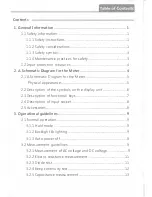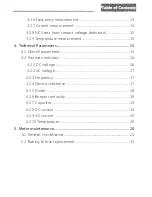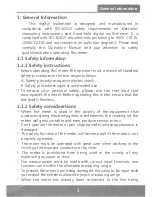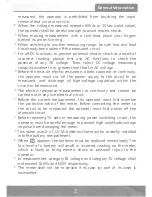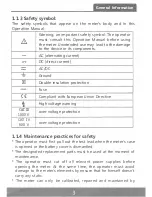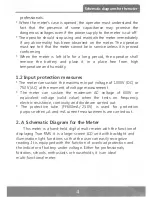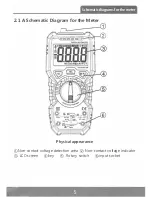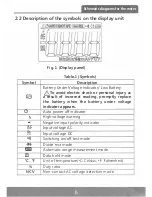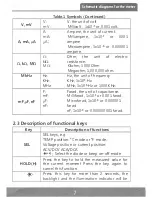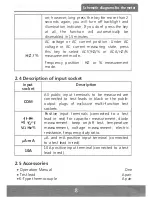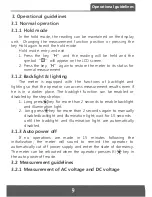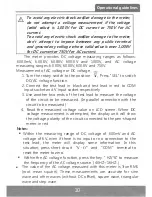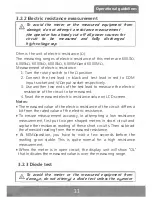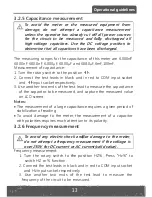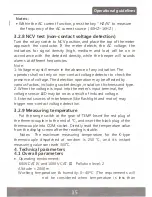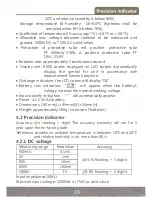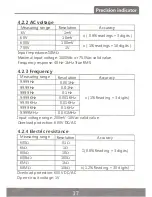
Operational guidelines
,&
To avoid any electric shock and/or damage to the meter,
do not attempt a voltage 1neasurement if the voltage
(valid value) is l,OOOV for DC current or 750V for AC
current.
To avoid any electric sho,ck and/or damage to the meter,
don't attempt to impose between any public terminal
and ground any voltage whose valid value is over 1,000V
for DC current or 750V for AC current.
The meter provides DC voltage measuring ranges as follows:
600.0mV, 6.000V, 60.00V, 600.0V and 1000V, and AC voltage
measuring ranges: 6.000V, 60.00V, 600.0V and 750V.
Measurement of AC voltage or DC voltage ,_
1. Turn the rotary switch to the position
\l,
Press "SEL" to switch
DC/ AC voltage function.
2. Connect the test lead in black and test lead in red to COM
input socket and V input socket respectively.
3. Use another two ends of the test lead to measure the voltage
of the circuit to be measured. (In parallel connection with the
circuit to be measured)
4. Read the measured voltage value on LCD screen. When DC
voltage measurement is attempted, the display unit will show
the voltage polarity of the circuit connected to the pen-shaped
meter in red.
Notes:
• Within the measuring range of DC voltage of 600mV and AC
voltage of 6V, even if there is no input or no connection to the
test lead, the meter will display some information. In this
situation, press short circuit "V - O" and "COM" terminal to
reset the meter to zero.
• Within the AC voltage function, press the key " HZ/%" to measure
the frequency of the AC voltage source ( 40HZ-1KHZ )
• The value of the AC voltage measured with this meter is True RMS
(root mean square). These measurements are accurate for sine
wave and other .waves (without DC offset), square wave, triangular
wave and step wave.
10
. .
Summary of Contents for FDM18A
Page 26: ...EMC LVD YO 1 04 0154...


